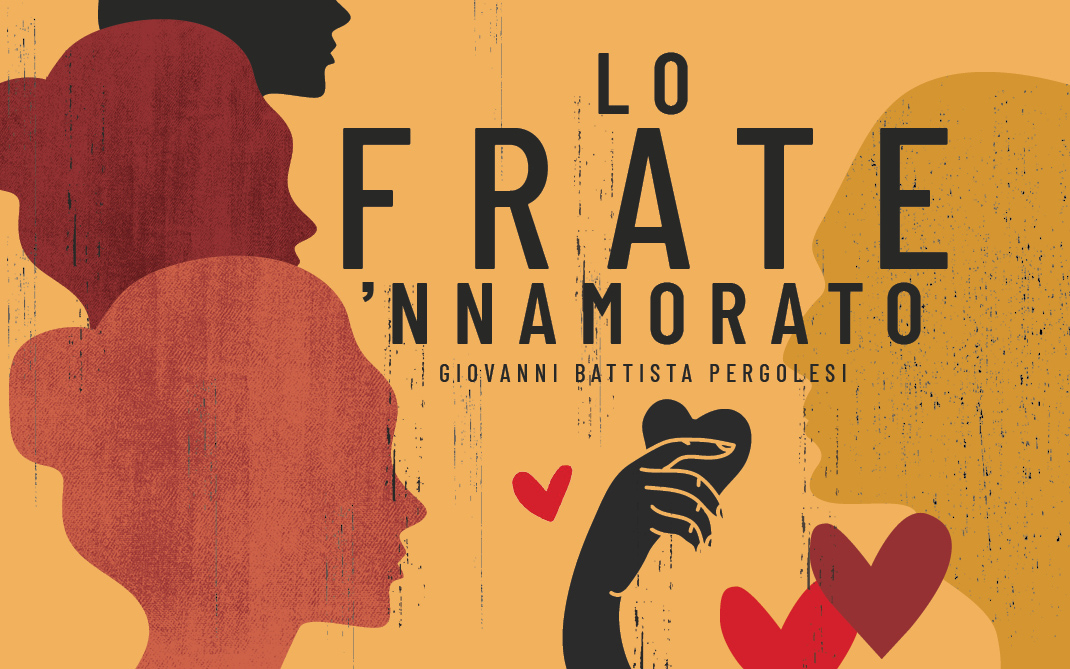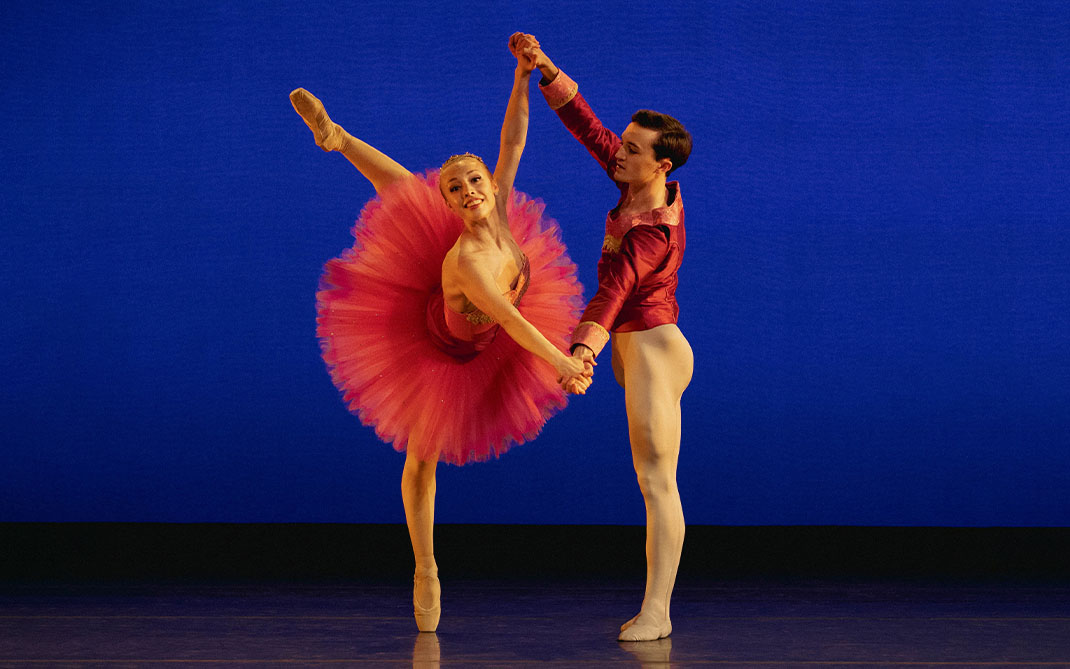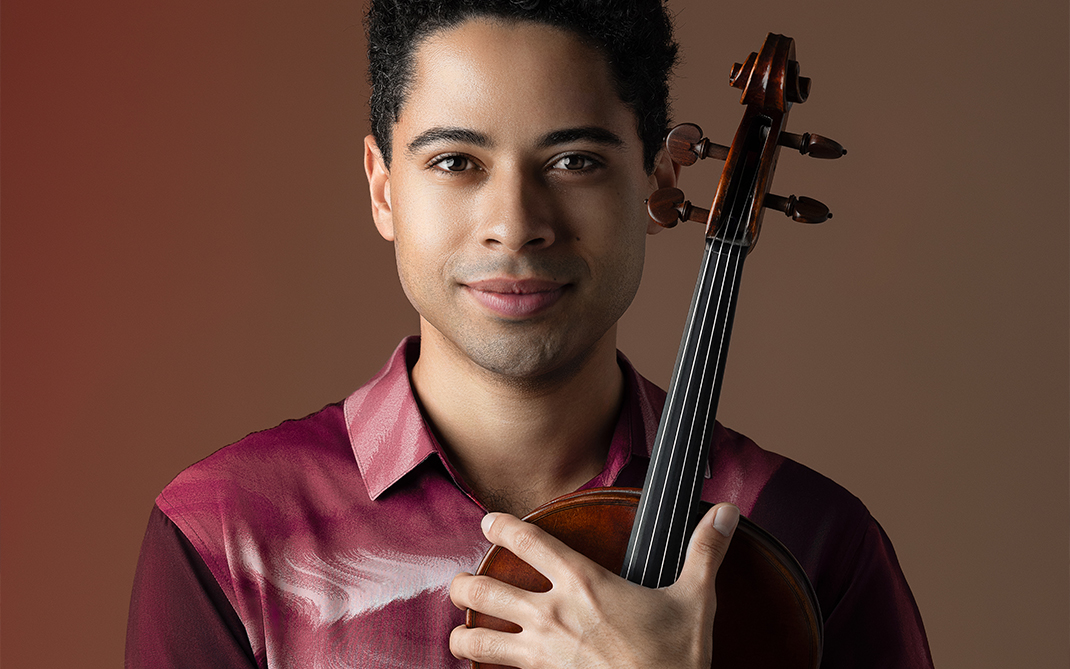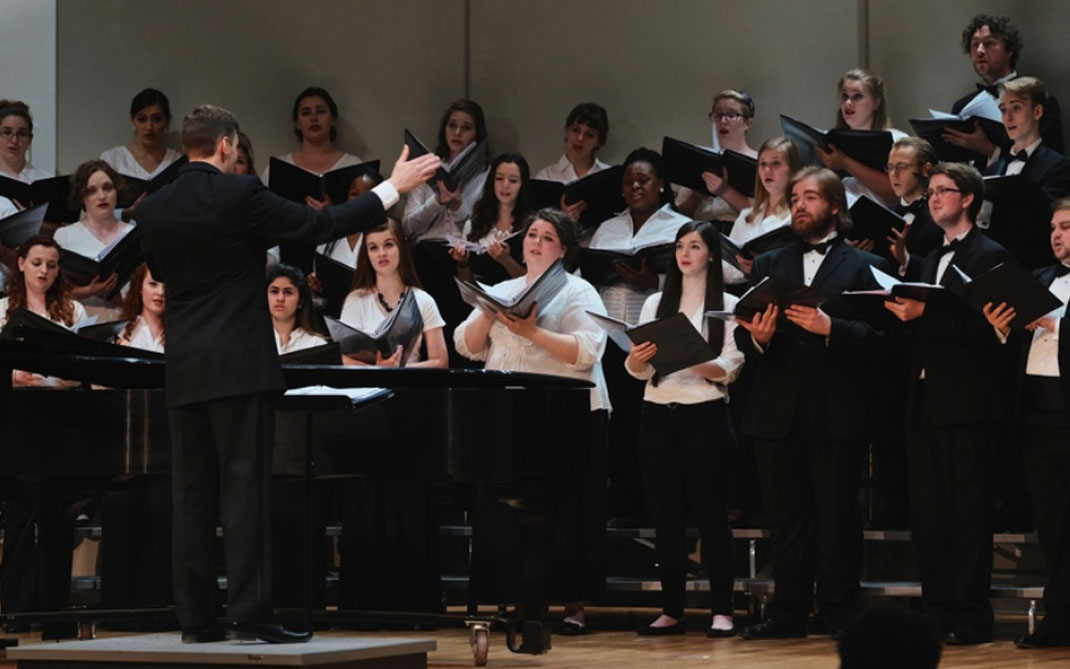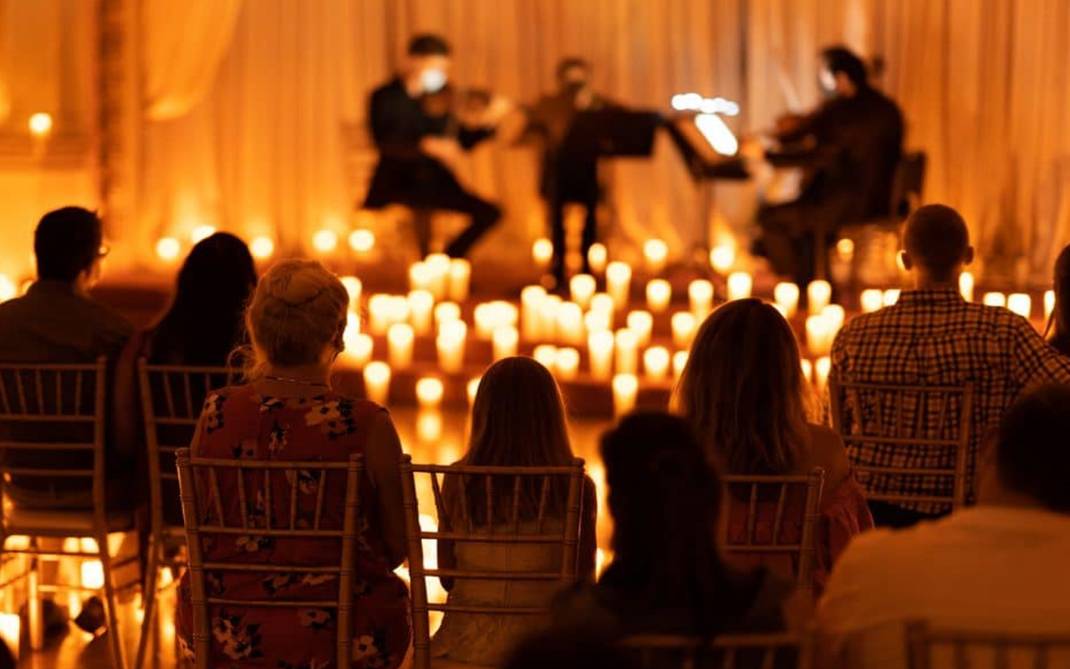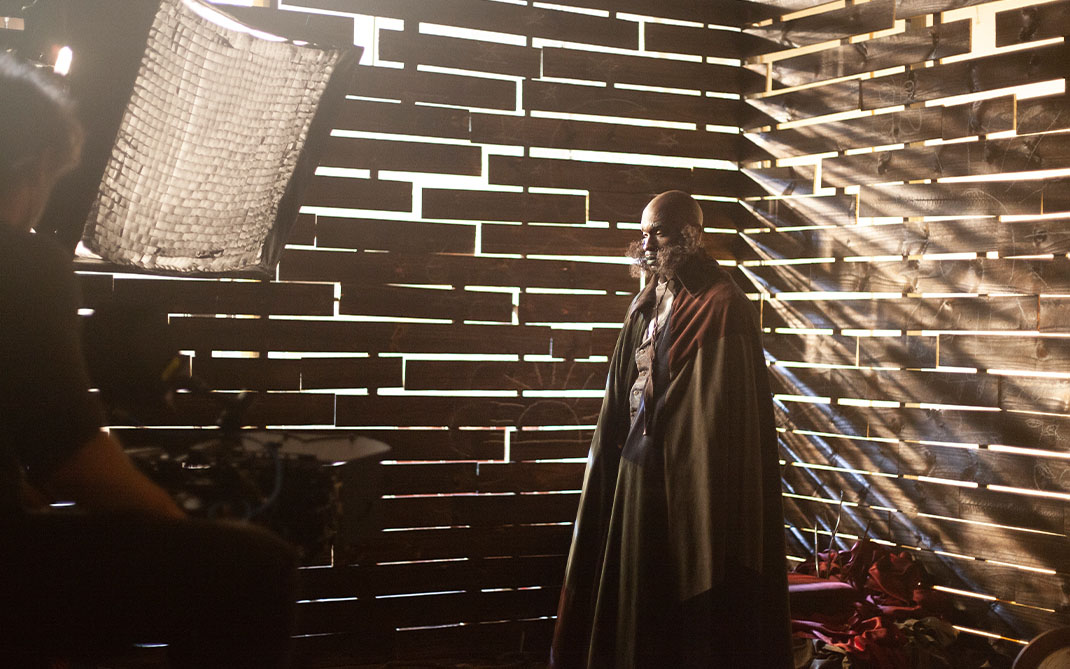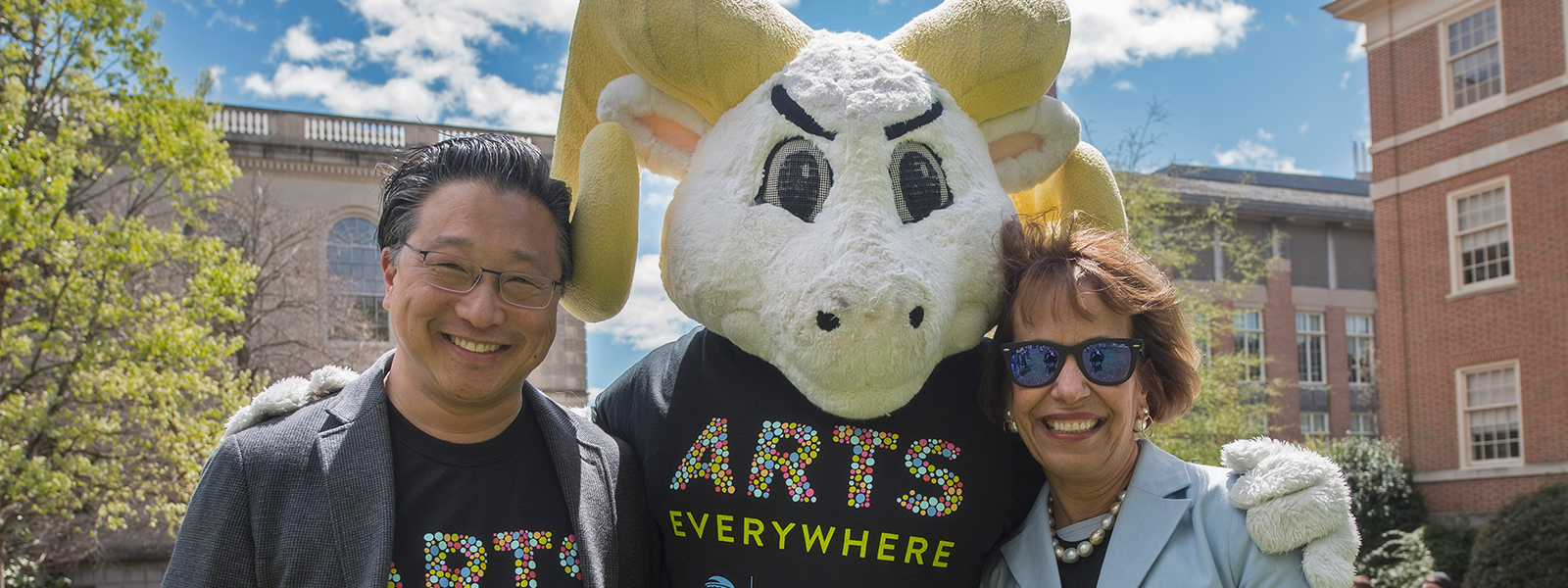The Artist as Leader: Emil J. Kang
Named by President Obama to the National Council on the Arts in 2012, Emil Kang is a national leader in the arts today. As Executive and Artistic Director of Carolina Performing Arts at The University of North Carolina at Chapel Hill, he founded the Carolina Performing Arts series, is a Professor of Practice in the UNC Department of Music, and spearheaded the Arts Everywhere initiative, a campus-wide celebration of the arts that launched earlier this year.
But Emil candidly admits that he faced off failure during the early years of his meteoric career. What sets Emil apart as an Artist Leader is how he responded to those challenges.
In this provocative and insightful interview, Emil, the son of Korean immigrants whose parents expected him to go to medical school, reflects on how his past artistic training, his early professional experiences (from his first job as a receptionist with the American Composers Orchestra, to his role as the first Asian-American and youngest person to hold the top administrative post of a major symphony orchestra) and his willingness to take risks and learn from mistakes continue to influence his leadership style.
Emil is a passionate ambassador for the transformative power of the arts and is generous with his time, passion, and expertise. He serves as a mentor for young artists who will be the artist leaders of tomorrow and serves on a number of national advisory boards and councils, including the Kenan Institute for the Arts’ Board of Advisors.
Choose a question below to begin exploring the interview:
- What do you connect between how you grew up and the kind of leader you are today?
- We know that we fail every day as an artist and as a person. Was there a moment where the failures showed you a direction you ultimately felt good about?
- When did you first notice your artistic background, or your creativity, coming into alignment with your ability to lead?
- Do you see a connection between musicianship and team building?
- People who transition from artist to leader often carry with them something from being an artist, but they also gain by letting something go. What are the things that you’ve let go? And what did you gain when you let go?
- How have you looked at how you lead other artists?
- Do you think that one of an artist’s strengths is to know you failed?
- How is allowing your humanity to come through part of how you engage others?
- What is the greatest reward for you right now, as someone who runs a really amazing arts organization?
- Do you see that type of "global artistic" community-building seeping into everyday culture, work life, industry, and places other than the artistic world?
- Tell us more about your new project that you have — Arts Everywhere — and how the idea of changing the way we experience the arts might begin to help people engage.
- How did you get buy-in from the administration and effectively lead up?
- How much of your entrepreneurial spirt is driven by who you are and how much of it is
informed by your arts background and education and your artist-as-leader transformation?
- Does mindfulness fit into your vision?
- What kind of advice would you give to young artists to encourage them to lead?
- What is the advice that you wish you had received when you were starting out as an artist leader?
CM: What do you connect between how you grew up and the kind of leader you are today?
EK: I was raised with the singular goal of being high-achieving. I think it was incomplete. It was fairly one-dimensional where you had to be at good at everything you did, and if you couldn’t, you shouldn’t bother. As a child of immigrants, it’s a typical story. So that actually transferred over into my work as a violinist. My mother would hear me make a mistake in my room and knock on the door and say, ‘That was wrong, do it again,’ then close the door. The constant need to be better but never being good enough was a real struggle for me.
As I came into my own as a leader, I had no training, except maybe for running sections in an orchestra as concert master. Throughout middle school, high school and college, it’s just not the same. So really, I developed myself as a leader by trying, risking and failing — trial and error. It was the hardest way possible.
In terms of my own leadership development, I really was thrown into the deep end, and I think I drowned three or four times. Somehow, I got resuscitated. ... Thinking about it now in retrospect, I find that’s the best way for me to learn actually, when there is a lot at stake.
CM: Was there a turning point? We know that we fail every day as an artist and as a person. Was there a moment where the failures showed you a direction you ultimately felt good about?
EK: I found myself in a very unusual position at 31, when I was thrust into this role as President and CEO of the Detroit Symphony. Having never managed more than six people in my life, now all of a sudden I was managing 120 and a budget of $48 million. I’m also running a 19th-century, white European organization in city that was 85 percent African-American and that had suffered urban blight for the past 30 years. In terms of my own leadership development, I really was thrown into the deep end, and I think I drowned three or four times. Somehow, I got resuscitated. It was that bad. Thinking about it now in retrospect, I find that’s the best way for me to learn actually, when there is a lot at stake. …
At this point in my life, I had no personal advisors to talk to about what this would mean, how might I go about it, who could I look to for help, or that I even needed help. I didn’t know any of those things. I really was starting from step one. But it’s not advisable to start at step one at an organization of that size, being CEO. I had a senior staff of seven, who were all over 50 years old, and I was 31. And then a 72-member Board of Directors including the heads of Ford, GM, Chrysler, Comerica Bank. So, whether it was in terms of managing staff, or labor relations with our orchestra and stagehand unions, or in governance, or in community relations, it was all new for me.
RK: When did you first notice your artistic background, or your creativity, coming into alignment with your ability to lead?
EK: I don’t think I noticed it until I left Detroit. I think I spent too much time trying to be someone that I thought I should be. In many cases, it was an out-of-body experience. As opposed to really believing in myself or a decision I made, I was acting. I suffered from a lack of coaching, of assistance, of guidance … especially when we faced uncertain financial times or had tough labor negotiations. Being a successful artist requires you to be your genuine self and my need to seem successful overtook my ability to be successful.
And yet, during my four years as CEO, we accomplished quite a bit. We were the first American organization to travel abroad post-9/11 with the help of The State Department. We also raised over $120 million dollars and opened an expansion to our concert hall, a high school for the arts, an education center, a collaboration with our PBS station there. We did so many great things but at the same time, I was making so many mistakes. It was the very basics. I didn’t know how to build an effective team. That’s really where I fell short, and that ultimately led to my departure — my lack of ability to build, but also to identify, to maintain and to encourage, a successful team.
CM: But you recognized it and probably made many adjustments. Do you see a connection between musicianship and team building?
EK: I think this notion of making something greater than yourself — something that’s greater than the sum of its parts — is what music making is all about. And when teams are high performing, that’s what happens as well. I don’t necessarily think that because we’re musicians we know how to do that better. Except I do know when we hear ourselves playing it as a team, we do know it’s working. And yet when it’s not, we harm our music-making at the same time. So you would think, why would we do that? If we know working together can make this magical sound, why would we bicker and fight? Because we’re humans. What gets sacrificed is the music making. And of course, as the boss, sitting in the concert hall, all I end up seeing is the bickering and not the music making.
Over time, these challenges, among others, extinguished my desire to be involved with symphony orchestras.… It was a really hard experience, where I said to my wife, ‘This is not fun anymore for me.’ I started to close my office door, I stopped going to orchestra meetings, I stopped calling my Board Chair. These were all obvious signs, these things you start to do. If I were a stronger leader had a more effective senior team, I think it might have been different.
CM: It sounds to me like you experienced the loneliness of being a soloist or a wunderkind, which can be very dangerous for the development of a leader.
EK: I think that’s a very good analogy. … It’s especially lonely when you’ve never gotten feedback about how to improve as a person, rather than simply as an artist or leader.
CM: I know a lot of artists who have been geniuses young and who have achieved a great deal so early that their identity gets firmly established within that artistic identity. Then when they are called on to do other things — to have a broader life, to lead — they really struggle with it.
It sounds to me like one of the lessons that you learned was that when the training of artists is so mono-focused on excellence and success, it can be a fragile way to build a person. That you had to feel that failure in order to let yourself grow. You had to let it go. I hear that a lot in people who transition from artist to leader, that they carry with them something from being an artist, but they also gain by letting something go. What are the things that you’ve let go? And what did you gain when you let go?
EK: I think the fear for every artist, including myself, was the fear that if I “let go,” I’d lose ground with my craft, I’d lose my edge. So, if I didn’t have a laser-like focus on maintaining my craft at the highest possible level all the time, and at all costs, then somehow, I’d fail. It’s very hard for anyone to think about their lives 20 years out, so you stay in this “perfectionism at all costs” mode as long as you can, until someone tells you that you can’t or that it’s not working. And by that point, making the change is like stopping an avalanche by standing in front of it.
The same thing happened to me. The only place that I received praise as a young person was on my instrument. Because of my upbringing and what I did, that was the thing I was known for. I didn’t want to lose that, yet I really didn’t love it, or I loved it when I got the praise, not because I loved it itself. …
RK: Knowing your experience and background, how has that influenced how you lead other artists?
EK: Over the past decade I served annually as a mentor for the Young Performers Career Advancement program sponsored by the Association of Performing Arts Presenters where I mentored one young musician or ensemble. These were recent conservatory graduates in their mid- to late-20s early in their careers. We’d spend a week together, then more informally over the following months and years — meeting up, Skyping, attending their concerts, helping them with their own questions regarding music making and their careers. I’d ask them all the time, ‘Why are you making music? Why is this your life?’ I’d ask these questions over and over again so they don’t lose sight and aren’t just doing it because it’s something they’ve always been doing. Then I’d encourage them to articulate how they remain creative, and not just creative in their interpretation of music, but creative in terms of how they present music, creative in terms of how they think of themselves — how they collaborate with others, how they raise money, all these things. So, they really tap into — and get feedback on — the things that I never did. Many of these talented artists, again, have primarily gotten praise for their instrument rather than for their ideas.
RK: It sounds like you get to be that mentor that you were looking for but never had.
EK: Yes, absolutely. I’ve been doing it for eight years and learned as much, if not more, than these musicians have learned from me through this program. Angela Myles Beeching ran this program for years and I thank her for the opportunity. The idea of actually helping young artists by giving them support over time with peers and an artistic life coach — which is really what it is — was such a genius and invaluable idea. …
I haven’t been able to figure out how to do that as a leader here. I don’t know why, but the thing that I spend more time doing as a leader is mentoring up-and-coming administrators who are in their 20s or helping undergraduate students. But for some reason it’s not in my colleagues here. And I haven’t figured out why that is.
CM: One of the things that I love about you, Emil, is that you’re critical of yourself in a way that is extremely compassionate, like that crack that you acknowledge is the way the light comes in. I see that in you. And I think that’s an honest and authentic part of how you lead. I wonder if admitting that you failed is part of that. I feel that an artist’s strength, in some ways, is to know you failed.
EK: I agree with you. But I want to make a refinement of that point, which is that it took me a long time NOT to try to cover up that crack.
RK: Was that the Detroit years?
... now I’m very different. It’s not that I don’t care as much. It’s that I no longer have anything to prove. I’m not afraid or ashamed. I still want to do better but I don’t pretend to be better than I am. What you see is what you get.
EK: Yes. Actually, the crack itself is part of who I am rather than a flaw. Growing up though, my entire life was about trying to fill in cracks or to be perfect. Then in Detroit, and when I started this role, I applied this approach, to be perfect. And now I’m very different. It’s not that I don’t care as much. It’s that I no longer have anything to prove. I’m not afraid or ashamed. I still want to do better but I don’t pretend to be better than I am. What you see is what you get. Sometimes I think my colleagues find it difficult because it’s a little too direct. They’re not all wired the same and their view of these cracks are going to be very different.
RK: It sounds like you’re finding, as you season as an artist leader, that allowing your humanity to come through is part of how you engage others.
EK: Right. Allowing it to come through means to be comfortable with your humanity, your vulnerability, you have to be open to being hurt by it, being criticized. My mother called me a late bloomer. I used to think she meant it in the more traditional sense, but I really think what she was saying was that I was emotionally, a late bloomer. I’m not saying that as a way to put myself down, but because I was so driven to succeed at all costs, there really wasn’t a chance for me to develop myself and to be that leader.
CM: What is the greatest reward for you right now, as someone who runs a really amazing arts organization?
EK: There are two. I love, love working with students. It warms my heart every time. I’m neither required or paid to do it. That’s the thing that keeps me going here — this might be surprising, but it’s not our performances that energizes me. It’s in working with young people and supporting and nurturing them, providing them with new experiences. That’s No. 1.
No. 2 is finding a niche in this global artistic ecosystem. That is very rewarding to me, feeling that sense of community, global community, that you’re a part of that. I feel very proud, as well as fortunate, to be part of an ecosystem where I can call up anybody; in Kosovo, or in Pakistan and I am part of that community so that I can share that community with our campus community and beyond. So those are the two things I really treasure.
... artists should be running the world — because we are the ones who understand how to value the things we don’t understand.
RK: Do you see that type of community-building seeping into everyday culture, work life, industry, and places other than the artistic world?
EK: I think the artistic community actually feels much more kinship across borders and across nationalities than other industries. There is a sort of, ‘Oh, you’re an artist, let’s break some bread, let’s spend time together.’ Maybe there’s a lesson to be learned there. We also have the ability to understand beyond traditional language, because languages and cultures are so different. We are versed in reacting to the intangible, to creative expression. Despite the fact that expression might be different in every place, because of our experiences we can still react to it with some meaning for that artist, whether they’re in Pakistan or Kosovo, that people who don’t speak the language really can’t do. This is where I go back to this idea that artists should be running the world — because we are the ones who understand how to value the things we don’t understand.
The thing I emphasize all the time with our students, and my staff and board, is that what we’re trying to do is teach our students how to become familiar with the unfamiliar. Or familiar with that feeling when you first interact with something you don’t understand. How do you react to that? Do you run away from it? Do you put up a barrier? Do you engage? How do you engage? Artists do that every single day! Don’t we want students like this, who don’t shy away from that, don’t reject it, repel it, but actually embrace it because they’re not afraid? …
We took the University’s senior leadership to the Museum of Art in Raleigh during a retreat in the summer … and I felt compelled to give a speech about how to walk through a museum. “I know half of you, about 5 minutes in, are going to start looking at your phones on this tour, so I want you to think, why are you doing that? Is it because you’re phone really can’t wait? Perhaps you think art isn’t your thing, or that you don’t get it? Then I explained how 17 seconds is the average time people spend in front of a painting in a museum, and how it’s so easy to “reject” something you don’t know or don’t understand. I asked them to consider the importance of acknowledging these tendencies and to think about how we model behavior to others on campus.
CM: Just listening to a work of art or just standing in front of a painting does not necessarily engage the average person. I’m thinking about this new project that you have — Arts Everywhere — and that somehow, the idea of changing the way we experience the arts might begin to help people engage. Tell me more about that.
EK: First of all, we can’t limit arts experiences to galleries and theatres and concert halls. That's No. 1. We can’t expect everyone to come into our temples. Then, how do we bring it out to the 29 of the 30,000 students who don’t study the arts? How do we bring the arts to them in a way that’s supportive, nurturing, part of everyday life — not just something they study. We hope to embed the arts into our campus culture and into our collective consciousness. Meaning will come later, right? But the awareness comes first. So, if we can actually get them to see, hear, think, feel first, then they can figure out after that what all those senses mean.
In terms of the arts, we talk about the three-legged stool at UNC of wanting to celebrate creative practice, creative learning and creative experience. And how can we make sure that every student on this campus spends extensive time in those three areas — where they are using their hands and their bodies, where they are using their senses, and where they are using their brains. How can we make sure they’re all doing that? I believe this is what we need to actually begin to nurture these young people to become familiar with the unfamiliar, to navigate nuance, to understand ambiguity, to avoid false binaries. So, there will be multiple layers of programming to address these three areas.
I’ll start with creative learning. Creative learning entails how we might alter the undergraduate general education curriculum in the College of Arts and Sciences for all first- and second-year students, before they declare a major, so that creative learning becomes a key part of their first two years as an undergrad. We’re now looking at incorporating more support for faculty and students to go to art museums, concerts, as part of their syllabi. The University will launch the new curriculum in fall of 2019 and I hope we’re able to embed learning through the arts for all. So that’s No. 1.
No. 2 is creative practice. When you look at incoming first year student data, they actually list the percentages of incoming freshman who participate in certain things in high school. No. 1 is community service, like 85 percent of them have done some level of community service; No. 2 is participation in a student club of some kind; No. 3 is sports; No. 4 is the arts — 60 percent of incoming freshman participate in the arts. By the time they graduate, it’s down to 12 percent or 10 percent. Why? And how would our students change if participation and engagement grew?
So I have this idea, what I call the Intramural Arts initiative, which is part of Arts Everywhere. Every student knows that you don’t have to be Michael Jordan to play basketball here. In fact, we have 20 levels of leagues. And we also have 28 acres of recreational fields for intramural sports, meaning non-varsity. This is a sports analogy. Our Arts majors, our Arts graduate students, are our varsity athletes. Where’s everybody else? Our intramural athletics office has data that shows two-thirds of our entire undergraduate class participate in some intramural sports. That’s 66 percent and doesn’t count those who go work out. For me it’s unacceptable that we don’t have that exact analogue in the arts, whether it’s throwing a pot, or acting, or dancing, or singing, anything. It should be just as ubiquitous, and easy to access and affordable and sustainable, so students can actually follow their own growth for all four years. An initiative like this on creative practice doesn’t exist at any major public research institution — a campus-wide, clearing house of resources — teachers, studios, everything — both outside in the community as well as on campus.
We’re also about to enter into a contract to develop a first mobile arts app that’s all about arts engagement. How do we reward student arts engagement on campus — actually get them to get those badges and those levels, and all those things? Every time they walk by the Ackland Art Museum, they get a little notification saying, ‘You’re near the Ackland. Did you know that this exhibit’s happening right now?’ Or, ‘If you go to the Ackland, ding, ding, ding, this is your 5th time at the Ackland!’ Sharing a whole kind of culture that exists on their phones.
The third leg of the stool is creative experience, how do we actually make creative experience a part of everyone’s lives and not just part of the artists’ lives or part of the arts patrons’ lives? I think we have some students who believe that the arts are not for them. We’re trying to change that and say it’s for everyone. … We’ve put together a Master Site Plan in accordance with our campus Master Plan that will activate parts of the campus through the arts. Our hope is for the arts to become part of their consciousness, whether it’s a graffiti wall or an arts installation, or even a 20-second crosswalk intervention.
I don’t operate sequentially or linearly in terms of authorization and permissions when launching a new idea. I do it at the same time. Basically what I do is I speak about the ideas publicly and see if I receive any feedback. Then I keep going.
RK: What did you do to get the administration to support this initiative? How did you effectively lead up?
EK: I don't operate sequentially or linearly in terms of authorization and permissions when launching a new idea. I do it at the same time. Basically what I do is I speak about the ideas publicly and see if I receive any feedback. Then I keep going. And I believe we have of a growing circle of donors who want to support it. How it looks and how it gets launched will happen in phases.
RK: Your passion and your vision are very contageous, which I’m imagining has helped take this idea a long way. Also I’m catching a very entrepreneurial spirit about you, and I’m curious how much of this is driven by who Emil is and how much of this is informed by your arts background and your arts education and your artist as leader transformation?
EK: I think it’s everything. I am persistent and ambitious and I really believe in the importance of innovation in the arts. And I want to show the naysayers, the arts naysayers, how the arts can be a part of that innovation culture in ways they don’t really understand. It’s not necessarily about launching enterprises, it’s about the way we think about it, the way we engage with it, the way students engage with it. … From the moment they make their college campus visit to the day they graduate, they have to make a conscious decision to either push the arts aside or engage. At its worst, parts of our community aren’t even aware the arts exist. Hopefully, of course, everyone will engage. I also believe some of what we’re trying can be replicable at other major public research universities.
RK: Does mindfulness fit into your vision, or in general, as an ideology. Is there a place for that?
EK: I’m hitting a sweet spot in my intellectual life, where I have tremendous confidence in my ideas, where I have confidence in my instinct as a guide, where I have learned how to build consensus, to inspire others to have a shared vision. But I’m much less competent at taking a breath, stopping, assessing, reevaluating, considering the impact of what my ideas are on other people. To the extent that your question involves how I affect other people, positively or negatively, I struggle. Because I get so caught up in my singlemindedness of a great idea. Right now, my staff are more concerned that I don’t understand the ramifications of new ideas on them, their workload, and our institutional direction. I’ve heard that I don’t articulate understanding of the pressure they’re under every day to try to execute. At this point, I lack sufficient mindfulness to understand how my personality impacts others rather than my ideas.
RK: You are recognizing a gap in how mindful you’d like to be in leading your team, and yet I also see a lot of mindfulness in the way you’re choosing to engage your ideology up and out. Up the university chain of command, and also out to donors, out to connections, out to the world. There is visible mindfulness in action, visible attention to the present.
EK: I guess so. I’m a really good chess player, and I see all the moves. It’s like when batters used to say the best hitters can see the seams of the fastball coming. I see the seams. I know exactly what I have to do. So it’s fine if I’m a one-man show, but it’s not fine when I have a whole group of people who need support and assistance. I’ve also learned over the years that there are people who are good managers and people who are good at other things. I know that I’m best when I’m creative and less good at managing people. I learned that in Detroit, but I also think if I’d had a more supportive opportunity there to really learn how to lead, it might have been different.
The right side of my brain, the creative side — has really gotten positive feedback, and has been able to build and build… I have a very keen awareness of where I like to spend my time, and how to buttress the areas where I don’t want to spend my time, how to make sure that we have the right people there.
CM: I think you’re very aware of what problems being a soloist can create. You also see the problem of being a visionary, that a visionary artist has to be careful because they may not care how it happens. … I don’t think there is anybody who doesn’t have strengths and weaknesses, but you understand your strengths, and you are trying to compensate for your weaknesses. I want to ask a question related to that. What kind of advice would you give to young artists to encourage them to lead?
EK: When you’re young, and the stakes are low, you have an opportunity where failure is not so life-threatening, that’s the time to actually try. And at the same time, as you’re trying to test your leadership skills, you are also testing your creativity. ‘OK, I have an idea, let’s see if it’s actually going to work!’ But then you need to bring other people in. That’s why I think it’s so important for all artists to work in ensemble — all artists. Never make art on your own, because that’s not the real world. When I hear musicians saying, ‘I don’t like chamber music,’ I’d like to smack them on the head. If you think you have a remote chance of making it as a professional musician, you have to be just as skilled in ensembles. Not because of the music, but because of what it teaches you. You have to successfully, not just perfunctorily but successfully, create something with an ensemble.
I know classical music like the back of my hand — I know the repertoire, I know what it should sound like, I know what it shouldn’t. But managing people? I had no clue. I thought I could learn that on my own, on the fly. Didn’t work.
CM: What is the advice that you wish you had received when you were starting out as an artist leader in Detroit?
EK: That it’s OK to ask for help. It’s such an obvious thing. But if you think you have something to prove, the last thing you want to do is ask for help. Unless it’s from your teacher. But, many times, you need help in other ways. How do you first gain the recognition of the need for that help and then how do you seek it out? Encouraging that vulnerability, that openness, that mindfulness, to be aware of where you need help beyond your craft, I wish I had that. I know classical music like the back of my hand — I know the repertoire, I know what it should sound like, I know what it shouldn’t. But managing people? I had no clue. I thought I could learn that on my own, on the fly. Didn’t work. This is where a lot of orchestra managers in my field fail and get their asses kicked. Boards hire them because they’re passionate about music. I’m probably one of the few people who would say we don’t need more musicians running orchestras. We need people who actually want to lead.
Epilogue
Running a complex arts organization brings its own unique set of rewards and challenges. Emil’s curiosity, passion, engament, and genuine willingness to learn have supported his growth as an artist leader. Intriguing takeaways include:
- Praise people. Recognize other for their ideas, thoughts, and openness, not just their productivity.
- Be courageous. Show your weaknesses, and be strong enough to ask for help and to receive feedback.
- Develop yourself through art. Embrace, participate or appreciate the arts as a tool to become ‘familiar with the unfamiliar.’
- Assess your leadership skills. Test your creativity to find new or different ways of engaging others and situations.
- Avoid the silo trap. Leadership may be described as a lonely business, but practicing it is always in ensemble.
— Rob Kramer
Interview conducted by Rob Kramer and Corey Madden
Edited by Betsi Robinson
